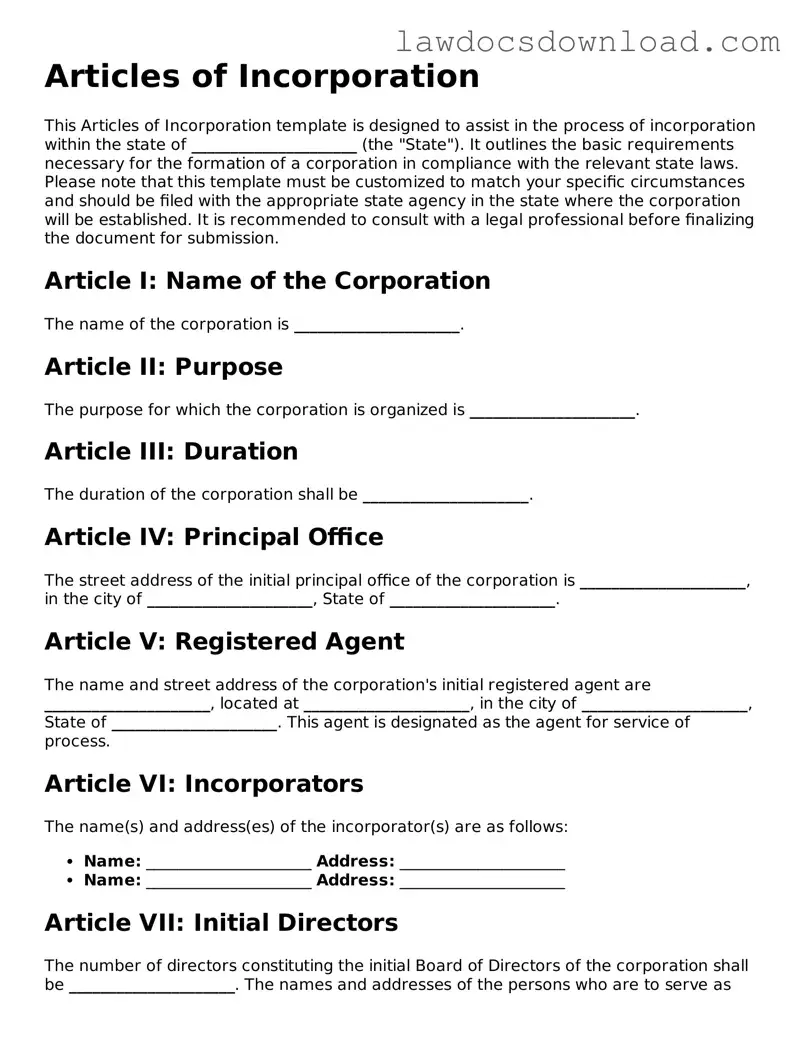Articles of Incorporation
This Articles of Incorporation template is designed to assist in the process of incorporation within the state of _____________________ (the "State"). It outlines the basic requirements necessary for the formation of a corporation in compliance with the relevant state laws. Please note that this template must be customized to match your specific circumstances and should be filed with the appropriate state agency in the state where the corporation will be established. It is recommended to consult with a legal professional before finalizing the document for submission.
Article I: Name of the Corporation
The name of the corporation is _____________________.
Article II: Purpose
The purpose for which the corporation is organized is _____________________.
Article III: Duration
The duration of the corporation shall be _____________________.
Article IV: Principal Office
The street address of the initial principal office of the corporation is _____________________, in the city of _____________________, State of _____________________.
Article V: Registered Agent
The name and street address of the corporation's initial registered agent are _____________________, located at _____________________, in the city of _____________________, State of _____________________. This agent is designated as the agent for service of process.
Article VI: Incorporators
The name(s) and address(es) of the incorporator(s) are as follows:
- Name: _____________________ Address: _____________________
- Name: _____________________ Address: _____________________
Article VII: Initial Directors
The number of directors constituting the initial Board of Directors of the corporation shall be _____________________. The names and addresses of the persons who are to serve as the initial directors until their successors are elected and qualify are:
- Name: _____________________ Address: _____________________
- Name: _____________________ Address: _____________________
Article VIII: Shares
The corporation is authorized to issue _____________________ shares of _____________________. The total number of shares the corporation is authorized to issue is _____________________.
Article IX: Indemnification
The corporation elects to indemnify its directors, officers, employees, and agents to the fullest extent permitted by the laws of the State of _____________________.
Article X: Incorporation Compliance
This document is prepared and submitted in compliance with the laws of the State of _____________________ relevant to the formation of a corporation. All information contained herein is provided in good faith for this purpose.
In Witness Whereof, the undersigned incorporator(s) have executed these Articles of Incorporation on the date of _____________________.
Signature: _____________________
Name: _____________________
Date: _____________________
